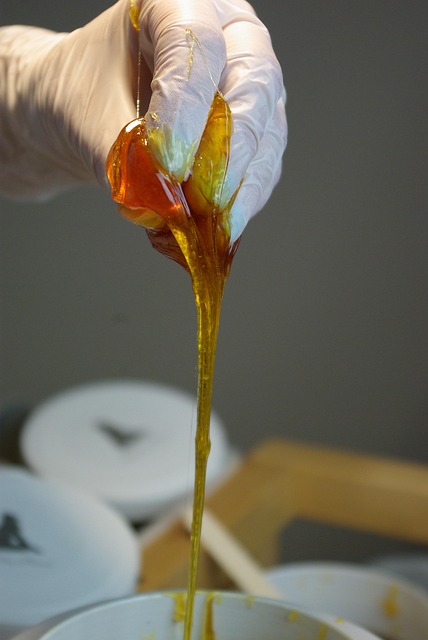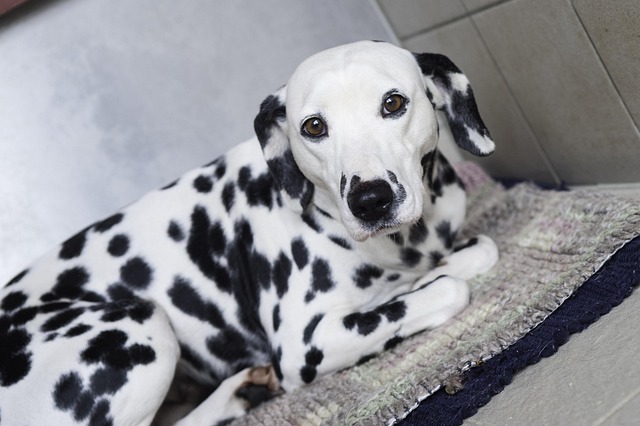Understanding pet stain types and causes is vital for effective removal. Gather essential tools and test cleaning solutions first. Act quickly on urine or fecal stains, blotting gently to absorb them. Use natural cleaners like vinegar, baking soda, and lemon juice for safe removal. Tailor techniques to surfaces: warm water and detergent for hard areas, enzymatic cleaners for fabrics. Prevent future stains with regular cleaning, pet-specific products, and grooming.
“Unravel the secrets to efficient pet stain removal with our comprehensive guide. From understanding the various types and causes of common pet stains, to mastering the art of preparation and employing natural cleaning solutions, this article is your ultimate companion in the battle against furry messes. We’ll walk you through step-by-step guides tailored for different surfaces, offering practical tips to prevent future stains and maintain a pristine home. Discover effective stain removal techniques that cater to your pet’s needs and your peace of mind.”
Understanding Pet Stains: Types and Causes

Pet stains can range from paw prints on your favorite rug to urine marks that leave an unpleasant odor and discoloration. Understanding the types and causes of these stains is the first step in effective stain removal. Common pet stains include those left by urine, feces, vomit, and even perspiration. Urine stains, for instance, often appear as light yellow or brown spots and can cause permanent damage if not treated promptly. Fecal stains not only leave an unpleasant smell but also contain bacteria that can be harmful to your health and the fabric.
The causes of pet stains vary from natural bodily functions to behavioral issues. Misplaced litter box habits, for example, can lead to urine or fecal stains inside the house. Excessive licking or chewing on fabrics can also cause stains due to saliva and other bodily fluids. Additionally, some pets may use carpeting or furniture as a marking territory, leaving behind odors and visible marks. Knowing these causes helps in implementing appropriate solutions for effective stain removal.
Essential Tools and Preparation for Stain Removal

Removing pet stains requires a few essential tools and some preparation for the best results. Start by gathering a staple cleaner, a brush or sponge suitable for the surface, warm water, and a mild detergent. Protecting your floor or carpet with plastic sheeting or drop cloths is crucial to prevent further spreading of the stain and making cleanup easier. Always test any cleaning solution in an inconspicuous area first to ensure it doesn’t damage the material.
Additionally, having a good pet hair removal tool like a roller or static cloth can help in getting rid of loose fur before cleaning. Pre-treating the stain with a product designed for pet messes is often beneficial. This step ensures that when you do clean, the stain is broken down and easier to remove. Lastly, don’t forget fresh air—letting your space ventilate between cleaning sessions aids in eliminating any lingering odors.
Step-by-Step Guide to Removing Common Pet Stains

Removing common pet stains can seem daunting, but with a step-by-step guide, it becomes a manageable task. Start by assessing the type of stain and its severity. For urine or fecal stains, act quickly as they can set into fabrics. Blot the area gently with a clean cloth to absorb as much as possible, avoiding rubbing which can spread the stain further.
Next, apply a pet stain remover or a mixture of equal parts water and white vinegar directly onto the stain. Let it sit for several minutes, allowing the solution to penetrate and break down the stain. After soaking, gently scrub the stained area with a soft-bristled brush or an old toothbrush, being careful not to tear the fabric. Rinse thoroughly with warm water and repeat if necessary until the stain is gone. Always test any cleaning solution on a small, hidden area first to ensure it won’t damage the material.
Natural and Safe Cleaning Solutions for Pet Stains

When it comes to pet stain removal, opting for natural and safe cleaning solutions is a responsible approach that benefits both your home and your furry friend’s health. Many commercial cleaning products contain harsh chemicals that can be detrimental to pets if they come into contact with their fur or are ingested. Instead, consider using ingredients found right in your kitchen pantry as powerful yet gentle stain removers.
White vinegar and baking soda are popular choices for tackling pet stains. Vinegar acts as a natural disinfectant and deodorizer, while baking soda is excellent for absorbing odors and lifting stains. Combining these two ingredients creates an effective cleaning agent that’s safe to use on various surfaces, from carpets to upholstery. Additionally, lemon juice is another powerful natural cleaner with antibacterial properties, making it ideal for freshening and stain removal.
Handling Stains on Different Surfaces and Fabrics

When it comes to pet stains, different surfaces and fabrics require distinct removal techniques. For instance, treating a stain on hardwood floors differs from cleaning a carpet or upholstery. In general, acting swiftly is crucial for effective stain removal.
For hard, non-carpeted surfaces like kitchen counters or tiles, use a mixture of warm water and mild detergent. Apply with a soft cloth, gently rubbing in the solution before wiping clean. For fabrics, pre-treat stains with a spot cleaner containing enzymes that break down animal oils and proteins. Test any cleaning solution on a small, inconspicuous area first to ensure it won’t cause discoloration or damage.
Preventing Future Pet Stains and Maintaining a Clean Home

Preventing future pet stains is key to maintaining a clean home. Regular cleaning and spot treatment are essential practices. Use stain removal products specifically designed for pets, as they’re effective in tackling common messes like urine, feces, and paw prints. Additionally, establish a consistent cleaning routine, focusing on high-traffic areas where your pets frequent. This proactive approach will minimize stains and odors before they become embedded in your carpets or furniture.
To further protect your spaces, consider using pet-friendly barriers and mats. These simple additions can trap dirt and moisture from paws, preventing direct contact with delicate surfaces. Regular grooming and brushing of your pets is another effective measure. By keeping their coats clean and healthy, you reduce the likelihood of them tracking in stains from outdoor adventures. Combining these strategies ensures a cleaner home and less time spent on stain removal.
